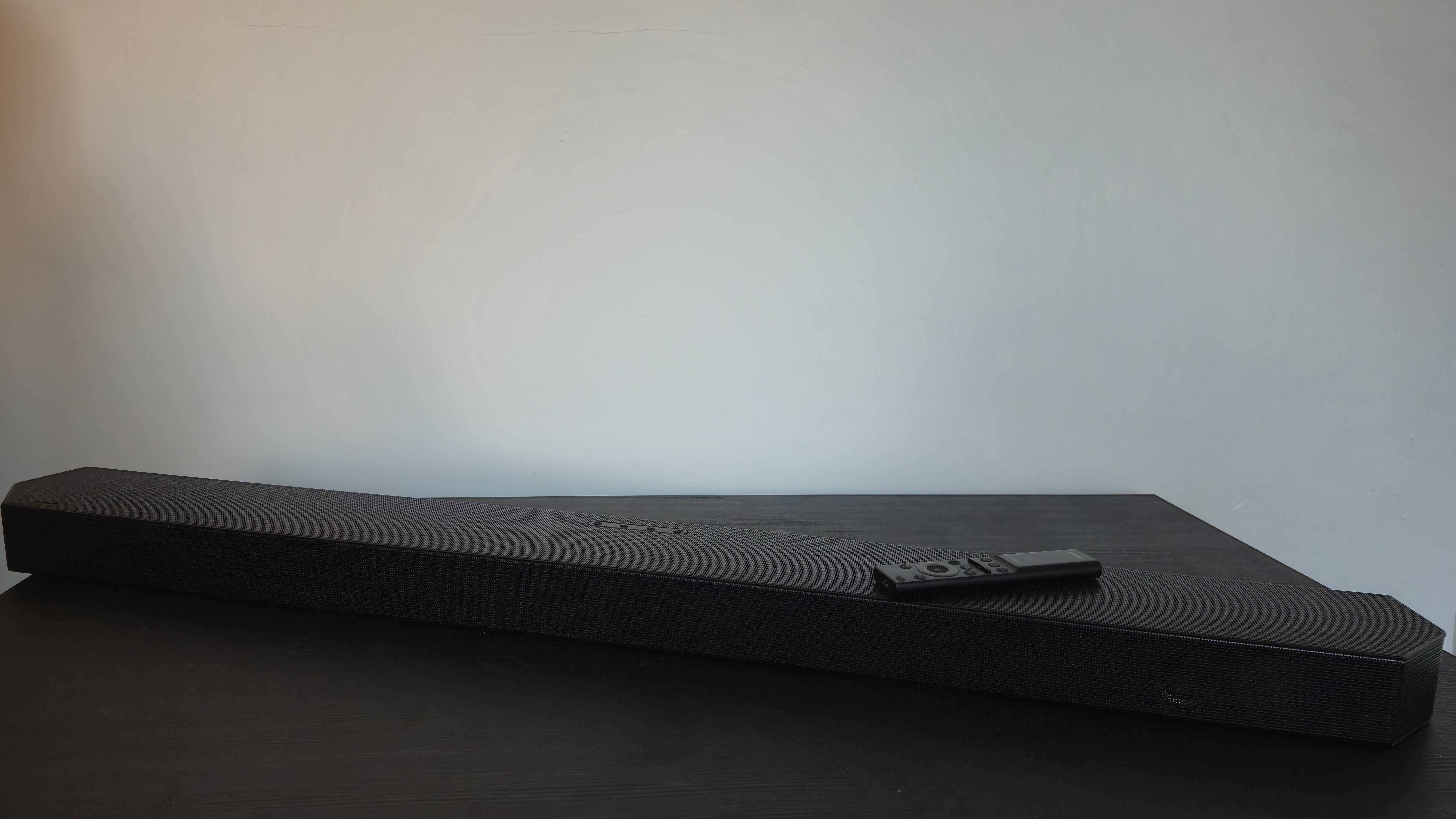
Samsung HW-Q800D: Two-minute review
The Samsung HW-Q800D is a mid-priced soundbar, carrying a list price of $999 / £749 / AU$1,099, but don’t be fooled: you won’t get middle-of-the-road quality. In fact, this is a truly excellent 5.1.2 channel Dolby Atmos soundbar, which boasts crisp vocals, rumbling bass and engrossing expansiveness. If you’re looking to unleash truly cinematic sound into your living space, look no further than the Samsung HW-Q800D.
The Samsung HW-Q800D is a soundbar and subwoofer combo – rear speakers are available, but must be purchased separately. But despite the absence of rear channels, this soundbar still asserts a striking spatial impression. That’s in part thanks to fantastic Dolby Atmos and DTS:X effects, both of which are bolstered by upfiring speakers. When watching movies, the positioning of on-screen characters and objects is mapped beautifully by the Samsung HW-Q800D. Atmos helps to create plenty of width and verticality, so you can be enveloped in the action at all times. Overall audio quality is top-drawer too, with super-clear voices, punchy deep bass and detailed musical performance all rolled into one.
On top of that, the Samsung HW-Q800D has a feature-set that is well up to par with many of the best soundbars. For instance, there’s SpaceFit Sound Pro, which uses the soundbar’s built-in mic to tailor audio to fit your room’s acoustics. But there’s also Samsung Q-Symphony, which can integrate your recent Samsung TV’s speakers with the soundbar output for an even more expansive sonic experience.
That’s not to mention a bunch of other options, such as wireless Dolby Atmos with compatible Samsung TVs, Game Mode Pro and Voice Assistant compatibility. But these features may, to some, seem extremely familiar. And that’s because all of them were available with this soundbar’s predecessor, the Samsung HW-Q800C. This 2023 release offers almost the exact same user experience, just without non-region-locked Chromecast compatibility, and with upgraded Bluetooth connectivity (Bluetooth 5.2). So really, the Samsung HW-Q800D is a slight refinement of an already great product – so owners of the HW-Q800C need not upgrade.
For a lot of gamers, the HW-Q800D will be a wonderful companion. You get a specialized game mode which optimizes surround sound for in-game action and 4K HDR passthrough. However, there’s no 4K 120Hz HDMI passthrough – meaning you don’t get the ultimate next-gen gaming experience via the HW-Q800D. That’s a shame, when Sony's mid-range Bravia Theater Bar 8 offers this.
But this isn’t a game-breaking omission. And there were none of those, in my view. Apart from a slight issue with subwoofer pairing, which I swiftly overcame, I had a blast during my time testing the Samsung HW-Q800D. The only other aspect some may feel unsatisfied with is its design. That’s because the soundbar has quite an angular, chunky design, rather than a sleek, curved look you’d see with the Sonos Arc Ultra, for instance. However, I personally felt that the soundbar’s high build quality and durable build made up for what is a solid-looking, but perhaps not stunning appearance.
Overall, the Samsung HW-Q800D is a beautiful-sounding, immersion-inducing soundbar system with a very fair price tag. If you have the cash – along with a desire for rear speaker channels – you may actually find that the slightly more premium Samsung HW-Q990D is better for you. And if you already have the Samsung HW-Q800C, the small incremental improvements aren’t worth an upgrade. But for anyone else, this is a soundbar that I can wholeheartedly recommend. Awesome Atmos, incredible movie or music performance, and a fountain of features – you can’t ask for much more.
Samsung HW-Q800D review: Price & release date
- List price of $999 / £749 / AU$1,099
- But regularly available for considerably less
- Launched in July 2024
The Samsung HW-Q800D is the South Korean company’s mid-range soundbar offering for 2024. It has a list price of $999 / £749 / AU$1,099 – by no means cheap, but not all too expensive given the inclusion of a highly competent subwoofer.
But good news – even if it only released this year, you’re probably not going to have to pay quite so much for the HW-Q800D. I’ve already seen it listed for $699 / £699 on Samsung’s US and UK site, making for a very tidy saving on a shiny new soundbar – and there seem to be further discounts around during sales events.

Samsung HW-Q800D review: Specs
Samsung HW-Q800D review: Features
- 5.1.2 channel system with 360W total power output
- Effective Dolby Atmos and DTS:X
- 4K HDMI passthrough, but not at 120Hz
The Samsung HW-Q800D is a true 5.1.2 channel system. Firstly, it has five channels on the main soundbar: one in the center; two more on the front, on either side of the center; and two on each end of the bar. Alongside that, it has two upfiring speakers on the top of the soundbar and a dedicated subwoofer.
This configuration helps to deliver fantastically immersive audio – something only improved by Dolby Atmos and DTS:X functionality. When watching movies, I found Atmos to be very effective – you get incredible width from audio output, which follows on-screen action very competently. The upfiring speaker drivers also add impressive verticality for movies and TV shows – but I’ll go into more depth on that in the next section.
If you want even more expansive sound, you can add the Samsung SWA-9500S rear speakers, but extra spend may not be necessary for a surround sound boost. That’s because you can harness the power of your TV – well, if it’s a select Samsung model from 2022-2024 – with Q-Symphony. This feature allows your HW-Q800D to work in tandem with your TV’s inbuilt speakers for even more of a three dimensional output.
Q-Symphony, of course, is a Samsung TV-exclusive – as is another feature, dubbed Wireless Dolby Atmos. Again, you need a compatible Samsung TV released after 2022 to use this, but it enables "pinpoint" delivery of sound effects wirelessly without HDMI. It’s worth noting, however, this will be compressed, unlike the Atmos TrueHD available with one of the best 4K Blu-ray players and a wired connection. If you only ever stream movies, though, it won't make a difference.
Perhaps my favorite feature that this soundbar offers though is SpaceFit Surround Pro. This harnesses the soundbar’s inbuilt mic, which listens to your room’s acoustics and optimizes sound for your space. SpaceFit Surround Pro is automatically on, so you get spatial audio that’s fine-tuned to you from the get-go. The effects of this are excellent and I found that no matter where I sat in my small-medium-sized living room, I was able to experience immersive sound without fail.
Not to exhaust you, reader, but there’s so much more. Some highlights include sound modes, which include: Standard; Adaptive; Surround; and Game. Adaptive uses AI in order to assess the on-screen action and deliver tailored audio depending on content. I found this mode to be particularly pleasing when watching news channels – with impressive vocal clarity on offer. And vocal clarity is improved further thanks to Active Voice Amplifier, or AVA. AVA identifies background noise in your environment and calibrates audio in a way that emphasizes vocal clarity – ideal if someone’s vacuuming in the room across, for instance.
I want to focus on Gaming, though. One sound setting, Game Mode Pro, adjusts audio output to offer a more three-dimensional soundstage, so you can get a better sense for where in-game sound effects are coming from. When playing Final Fantasy VII Rebirth on PlayStation 5, I got a great spatial impression, especially during combat, which helped me to ascertain the movement, actions, and whereabouts of my foes. Samsung TVs with Game Hub support are also able to switch the soundbar to Game Mode Pro automatically, which is a neat addition.
Unfortunately for gamers, however, the HW-Q800D leaves out one very handy feature. I’m talking, of course, about 4K 120Hz HDMI passthrough. Sure, you get 4K HDR 60Hz passthrough here and that’s going to be enough for a lot of people, but if you want full next-gen capabilities, this won’t cut it.
This speaks to something more generally – as strong as this soundbar's feature-set is, almost everything that’s here was already present in the HW-Q800C. The only ‘major’ additions are non-region-locked, built-in Chromecast and an upgraded Bluetooth version (5.2). That’s it. Does that take-away from the HW-Q800D’s feature quality? No, it truly is exhaustive and brimming with options. But what it does mean is that there’s pretty much no reason to upgrade if you already have last year’s model.
- Features score: 4.5/5
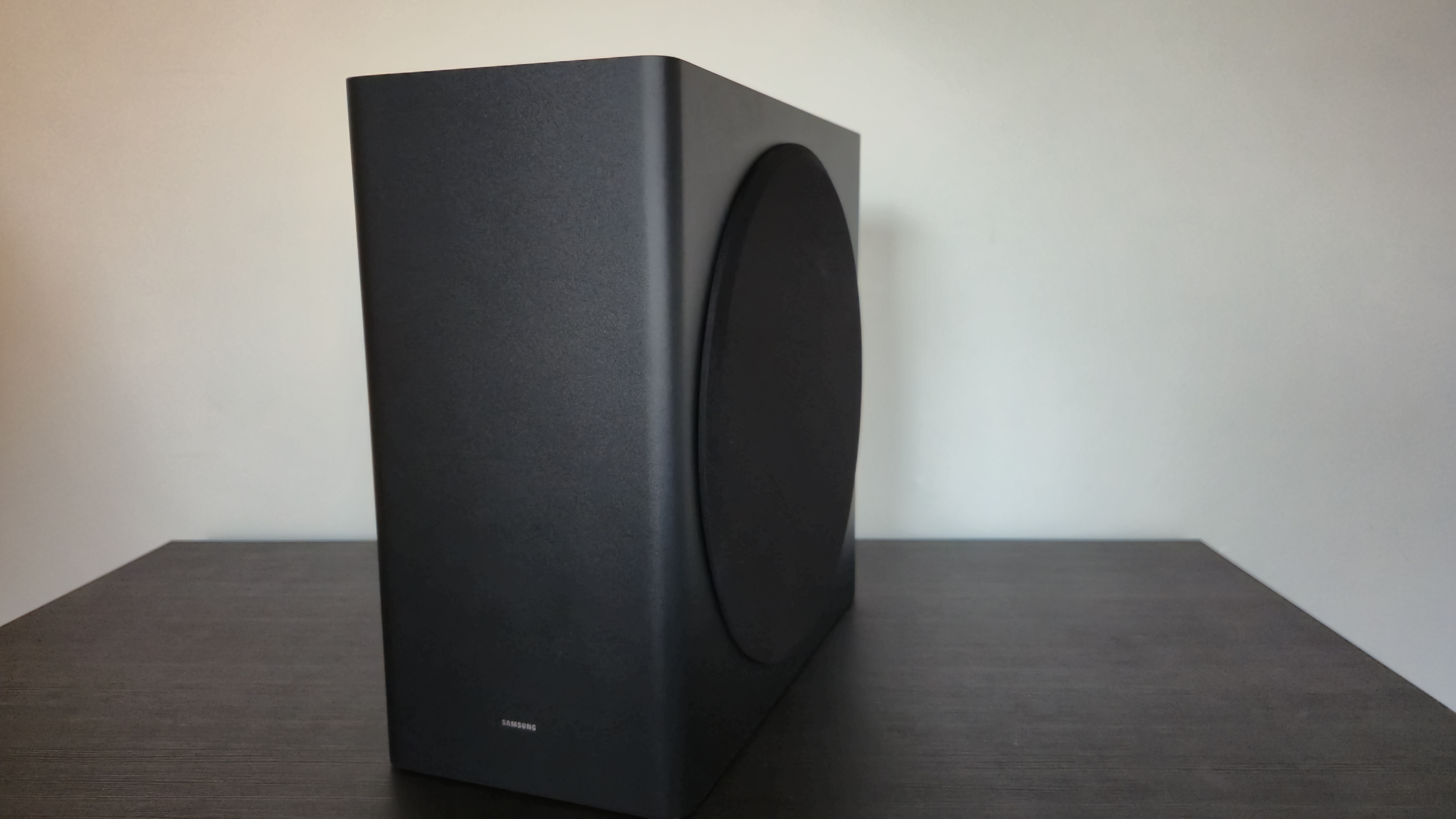
Samsung HW-Q800D: Audio performance
- Crisp vocal clarity and booming bass
- Great for movies and music alike
- Fantastic Dolby Atmos effects
This soundbar serves up a mighty sonic performance thanks to its 11 speakers and total power output of 360W. And you really feel that power at all times, whether watching movies or even just listening to music – with the included sub providing some serious low-end boom.
For instance, I tried watching Top Gun: Maverick and the sound of jet engines firing up was deep, imposing and room-filling. Low-frequency audio was never thin or lethargic either – I found it to be pleasingly deep and responsive when jets soared through the skies, which added serious impact to combat-filled action scenes.
Similarly, I found bass to be excellent when listening to music. The drum machine in Black Eye by Allie X is intended to be strikingly deep and the HW-Q800D does a phenomenal job of replicating that. The dynamism of the song’s bass connecting up to the lower mid range was also captured beautifully – so if you’re into bass-heavy bangers, this soundbar will likely cut it for you.
Sticking with music, I found Standard mode was perfectly up to the task, although Dynamic worked nicely too. Beyond bass, things are equally awesome. I tuned into Clair de Lune by Kamasi Washington and felt that organ in the background had a subtle yet super clear sound profile, with the sporadic piano playing also occupying a well-defined sonic pocket and the trumpet sounding pleasantly forward. On top of that, percussion was clean, rhythmic and tinniness free, tying up a non-grating, highly enjoyable listen. As you’d hope, there’s well-defined separation on offer from the HW-Q800D with a wide, nuanced soundstage that kept me listening for hours.
But let’s move onto arguably the most crucial aspect – spatial audio performance. This soundbar supports both Dolby Atmos and DTS:X, but I was mainly viewing content with the former. And Atmos effects are brilliant here. When watching The Boy and the Heron, the trajectory of the heron’s flight was very well mapped and during the tension-filled opening, the roar of flames and sound of the protagonist – Mahito – running were traced and fed back to me accurately and impactfully. In a fire-consumed area, both the width from the soundbar’s side speakers and verticality from its upfiring ones played into the frightening, heart-racing atmosphere of the opening scene, so you can have no doubts about the immersive nature of Atmos here.
The only real negative in terms of audio presentation is that you’re not getting rear speakers from the off. That lack of rear staging may feel a little unbalanced for some – but you can purchase SWA-9500S rear speakers separately and pair them if you want to boost expansiveness further. For me, sitting in a small-medium-sized room, however, I felt highly satisfied with the soundbar and sub combo alone.
More generally, the sound quality on offer from the HW-Q800D is amazing. I tuned into live news and found that vocal clarity was very good, especially in Adaptive mode – there was no tinniness or distortion to be found, even at high volumes. I also found instrumental and vocal separation to be top-notch when playing Final Fantasy VII Rebirth on PS5. Near a ranch, I could hear the sound of Chocobos walking, wind flowing, soft strings playing and characters speaking – but all of it was easily discernible and expertly weighted. I briefly flicked back to my TV speakers and the quality difference was astonishing – the HW-Q800D really can transform your listening, viewing and gaming experiences.
Overall, the HW-Q800D is just more of the same from its predecessor – but that’s a highly positive thing. You’re getting deep, immersive audio, ultra-crisp vocals and tasty Atmos effects to boot. Given you’re not actually paying top-of-the-range price, performance isn’t going to come a whole lot better – especially if you have the cash to add those rear speakers into the mix.
- Sound quality score: 5/5
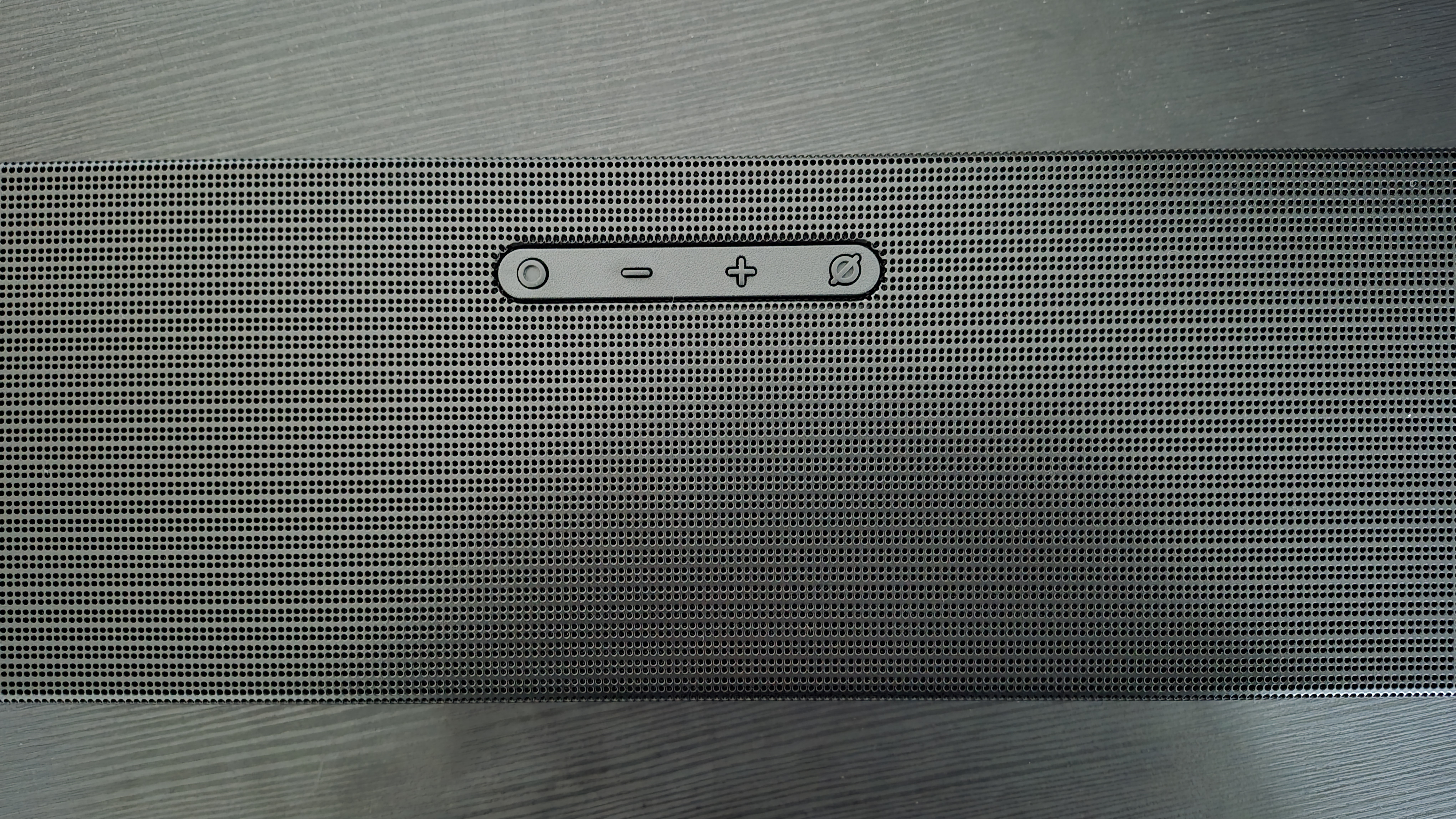
Samsung HW-Q800D review: Design
- Strong build quality
- Though slightly chunky and angular
- Metallic grilled finish is attractive
This isn’t the largest soundbar and sub combo ever, but it’s definitely on the hefty side of things. The soundbar itself is pointed, angular and fairly chunky – in fact I had to place it on a shelf below my TV as it was too big for my usual setup. However, if you have a decently wide and long TV unit, you shouldn’t have too much trouble fitting it in.
For some, the aforementioned angular, slightly chunky look might be a bit of a turn-off. And I’d certainly argue it’s not the most elegant or pleasing to the eye. What its aesthetic does say to me, though, is that you’re getting a sturdy, durable, high-quality bar – and it’s certainly all three of these things.
Similarly, the included woofer is quite a tall, broad beast. It’s got a felt-covered driver on its side, as well as a vent on its reverse side and looks pretty clean overall. Both the sub and main soundbar have the same color code as their predecessor – a slightly grayish matte black that in my view, is classy-looking and suits its more chunky appearance to a tee.
- Design score: 4/5
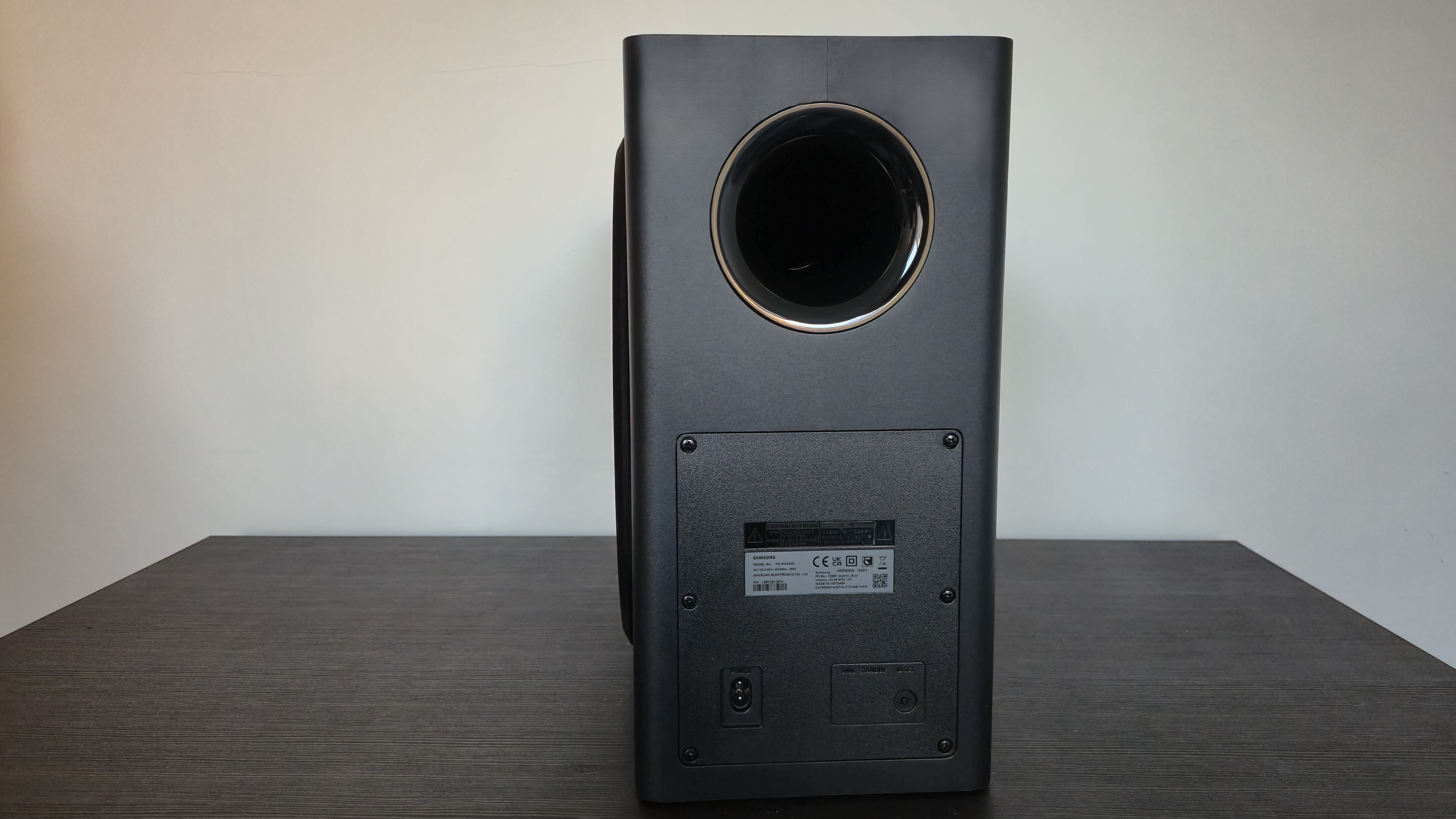
Samsung HW-Q800D review: Setup & usability
- Easy to control in-app
- Neat, simple-to-use remote
- Personally experienced an issue with sub pairing
OK, one slight gripe I had with the Samsung HW-Q800D was related to the setup process. After hooking up the soundbar and sub to power outlets, I strapped in and got ready to listen… but I instantly noticed something. A distinct lack of low-end punch. I soon discovered, however, that this was due to the subwoofer failing to sync up with the soundbar out of the box. Happily, a simple unplug and replug was enough here – meaning this was a pretty small issue overall. Nonetheless, this was a setback and although most are unlikely to encounter this, it was slightly frustrating for me.
Otherwise, though, the Samsung HW-Q800D was straightforward to setup. I connected it to my TV using HDMI eARC, meaning I could use my typical TV remote to alter volume – a super-handy feature. There’s also an included wall bracket if you need that for a mounted setup.
This soundbar is very easy to use, too. I used the Samsung Galaxy S24 FE to download the Samsung SmartThings app, which is well laid-out and simple to use if you want to adjust soundbar settings. You can also change surround sound, tone, volume and channel level settings with the included remote, which is diminutive, sleek and super responsive.
The soundbar itself also has controls, if you need them. It has an inbuilt mic which can be used to activate Amazon Alexa or Google voice assistants – and there’s a button to activate or deactivate this on top of the bar. Alongside that, there’s also a volume up and down button – both of which are well-sized and again, very responsive.
- Setup & usability: 4/5
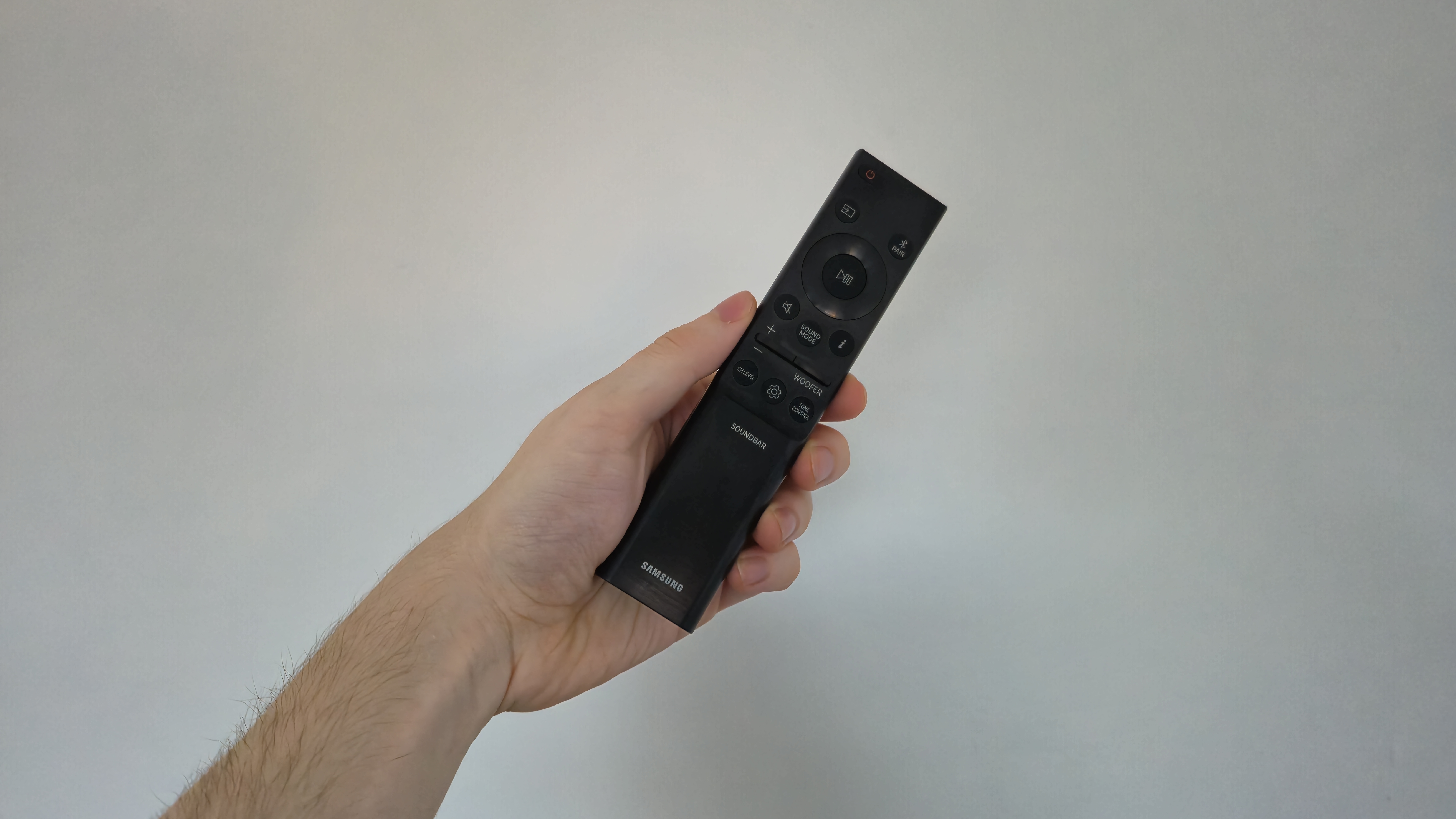
Samsung HW-Q800D review: Value
- Outstanding performance for the price
- Additional rear speakers don’t come cheap
- Upgrades on predecessor extremely minimal
For the price you pay, the Samsung HW-Q800D offers incredible performance for movies and music alike. If you want detailed, expansive and super-clear audio, you get all of that, so even if it's still quite the investment to spend approximately $699/£699/AU$1,099, you’re certainly getting your money’s worth.
Having said that, it’s not all good news in the value category. Now, if you decide that you do want to add rear speakers to the base offering, you’re going to have to cough up more. Specifically, the Samsung SWA-9500S rear speakers cost around $199/£199/AU$349, making the overall cost here quite hefty. Of course, this is merely an option, but it’s worth bearing in mind if you want the full package.
Something I am more critical of, however, is the real lack of improvements over 2023’s already incredible Samsung HW-Q800C. Other than some small incremental additions, this is almost the same product, so it’s not worth upgrading to and if the last-gen model is available for less, you’re getting almost equal amount of bang for less buck. So, even if it's excellent for its class, the lack of improvement is a slight dampener here.
- Value score: 4/5
Should I buy the Samsung HW-Q800D?
Buy it if...
Don't buy it if...
Samsung HW-Q800D: Also consider
How I tested the Samsung HW-Q800D
- Tested over a week
- Integrated the soundbar into my usual setup
- Used while watching movies, streaming music over Bluetooth, and gaming
When testing the Samsung HW-Q800D, I had it hooked up to my Hisense U7K TV via HDMI eARC. I also connected to the soundbar using the Samsung SmartThings app on the Samsung Galaxy S24 FE, which allowed me to alter settings and play music over Bluetooth.
The soundbar was placed on a shelf below my TV in a small-to-medium-sized room, with the subwoofer positioned beside my TV unit. I tested only the included soundbar and subwoofer, without any add-ons.
I tried viewing, playing and listening to a wide variety of content during my testing time – which spanned over a week-long period. I watched a number of movies and TV shows, played games on my PlayStation 5 and Nintendo Switch and listened to music on Tidal with the Bluetooth connectivity option. I tuned into the TechRadar testing playlist when assessing the quality of music on the HW-Q800D – which includes songs from a wide variety of genres.
- Read more about how we test
- First reviewed: November 2024







